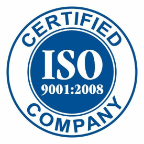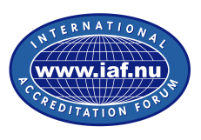Pulse Jet Bag Filters (OptiwaveTM)
Pulse Jet Bag Filters (OptiwaveTM)
CLAIR Engineers Pvt Ltd (CEPL) has adopted and further developed OptiwaveTM Pulse Cleaning Technology (OPWC), for long bag filters, which can be applied in industries aimed at complying with stringent pollution norms set by the CPCB.
The principle of OWPC is based on creating a high pressure inside the filter bag by injecting a large volume of compressed air that is fired axially into the top open end of the bag. The distribution of compressed air in short pulses is performed by selectively firing a pulse valve, connected to a tank containing compressed air. The pressurized air pulses are supplied to a row of bags by a tube provided with small orifices or nozzles, which direct the jets of compressed air at a high velocity into the top of the bags.
The nozzles in the pulse pipes are arranged in such a manner that the discharge of flow is equal in all the nozzles along the length of the pulse pipe. As the air burst travels down and through the bags, a pressure and shock wave is transmitted down the length of the filter bags. The bags expand, and as their shape changes rapidly from concave to convex, the fabric flexes and the dust layer cracks. As the bags expand to their full circumference and rapidly decelerate, the particles in the dust layer are partly dislodged due to inertia forces. This dislodged dust cascades down the length of the bags and eventually settles into the hopper located below the bags.
The fast action of the compressed air release into the filter bags results in a minor stretch of the fabric when it is expanded to the circular form. At the same time no bending of the fabric or friction against the cage occurs in this expanded circular form. Hence, the fast, efficient cleaning will have no negative effect on the bag life. On the contrary, it prolongs the bag life by keeping the fabric clean and in full operation throughout the life of the filter bag.
Cement industry is one of those industries given to comply with the most stringent emission norms. Pulsejet Bag Filters have been first adapted about 20 years ago with the objective of reducing the particulate emissions (PM) to less than 100 mg/m3, however recent reforms have asked for advanced technologies to bring the emissions further down from 30 mg/Nm3 to 10 mg/Nm3.
Optiwave Pulsejet Bag Filters pioneered by us, have surpassed criteria not just on emissions but also in longevity of bags & efficient bag cleaning techniques. The following applications have seen extensive use of the technology:
Most of the international Steel companies have already adapted the Pulsejet Long-bag Technology for their large gas volume processes. In India, the likes of JSW, Tata & SAIL have already started moving from traditional ESPs to Pulse-jet Bag Filters in order to prepare for norms in coming times.
The major value addition with Optiwave Cleaning comes with respect to increased bag-life and reduced consumption of compressed air for bag cleaning. The following applications in Steel have seen extensive use of Pulsejet Bag Filters in the recent times where desired emission is 30 mg/Nm3 to 10 mg/Nm3
Ferro-Alloys & Minerals Industry have the following application of Pulsejet Optiwave Technology where desired emission is 30 mg/Nm3 to 10 mg/Nm3:
Extensive use of Pulsejet Bag Filters in below applications where desired emission is less than 30 mg/Nm3 to 10 mg/Nm3:
and more…




